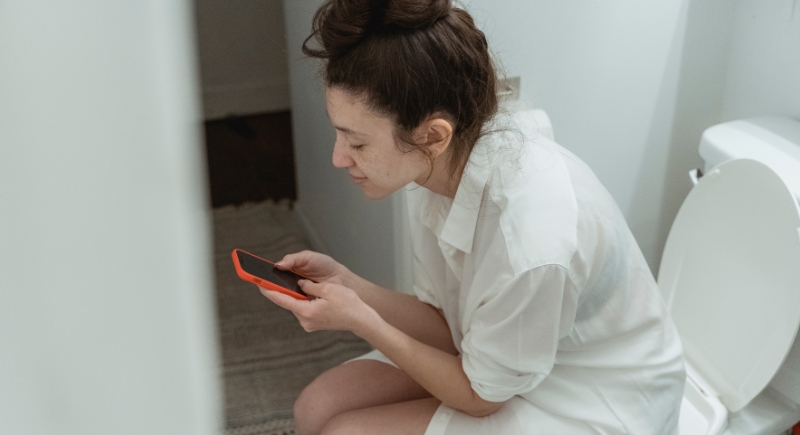Toilet Scrolling Is a Real Pain, Literally
You probably don’t think twice about pulling out your phone when you head to the bathroom. It fills the time, helps you catch up on a few texts or headlines, and feels like a harmless habit. Most of us do it without ever wondering if it could come with a downside.
But that simple routine is starting to raise red flags. Doctors and researchers have begun connecting long bathroom sessions with real physical strain, and hemorrhoids are at the top of the list. What seems like a quick scroll can add up to a problem that’s more uncomfortable than you’d expect.
Sitting On a Toilet Changes How the Body Responds

Image via Canva/Africa Images
Keep in mind that a toilet doesn’t support the body the way a chair does. The seat design leaves the pelvic floor suspended, which increases downward pressure over time. That pressure causes blood to pool in the veins around the rectum and raises the risk of hemorrhoids.
Medical teams reviewing colonoscopy data confirmed that people who sit longer, especially while distracted, experience this strain more often. The study focused on internal hemorrhoids, which tend to go unnoticed until they cause bleeding or discomfort. Researchers identified this mechanical cause clearly and recommended shorter bathroom sessions as a preventive step.
Phone Use Makes Bathroom Visits Last Longer
Data showed that people who bring phones to the toilet tend to stay there for extended periods of time. Over 37% of phone users sat for more than five minutes per visit. Among non-users, only about 7% said that long. Most people didn’t realize they were staying longer than usual.
When asked, just 5% of participants admitted that using a phone made them stay in the bathroom longer. The rest either didn’t notice or underestimated their time. But extended sitting clearly showed up in colonoscopy findings, where hemorrhoids appeared more frequently among phone users.
Common Activities Keep People Glued to Their Screens

Image via Pexels/Miriam Alonso
At the end of the day, the question that comes up is simple: what are people actually doing in there? In the study, most phone users said they caught up on the news or scrolled through social media while seated. These apps are designed to capture attention and hold it. One link leads to another, one scroll leads to the next. That cycle keeps people rooted to the spot, even when they think it’s just a quick check.
Experts Recommend a Five-Minute Limit
Doctors involved in the research agreed that toilet visits should stay under five minutes. If no bowel movement happens during that time, the recommendation is to leave and return later. Sticking to this time frame benefits the body in more ways than one. Shorter sessions reduce unnecessary strain on the veins in the rectal area, which lowers the risk of hemorrhoids forming or existing ones becoming worse.
It also protects the pelvic floor from strain, a key factor in preventing incontinence and chronic pain down the line. Limiting bathroom time can even support digestion. The body’s natural rhythm isn’t improved by waiting; if the urge isn’t strong enough, then sitting idle doesn’t make it happen.
In fact, overstaying can confuse those signals and lead to more irregularity over time. Keeping visits brief respects how the digestive system is designed to function.